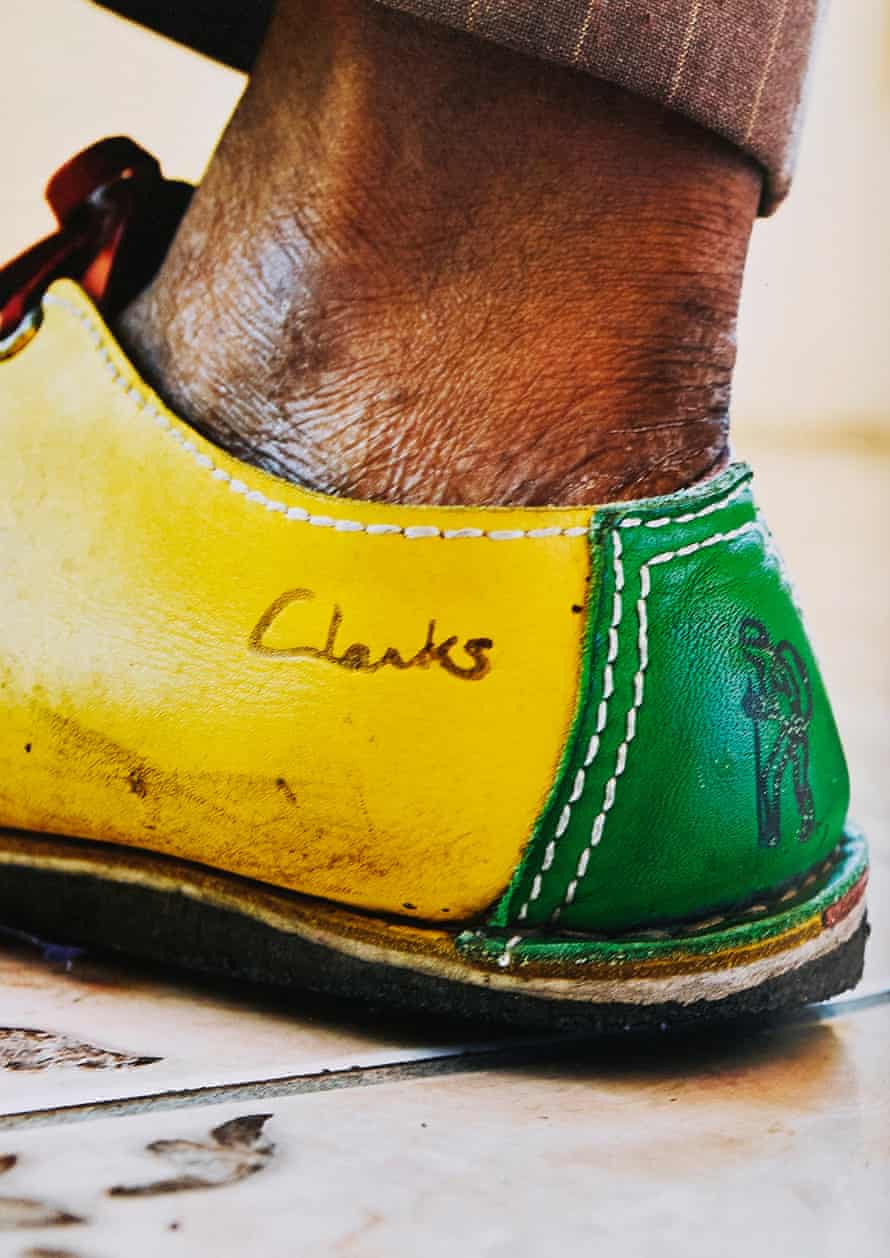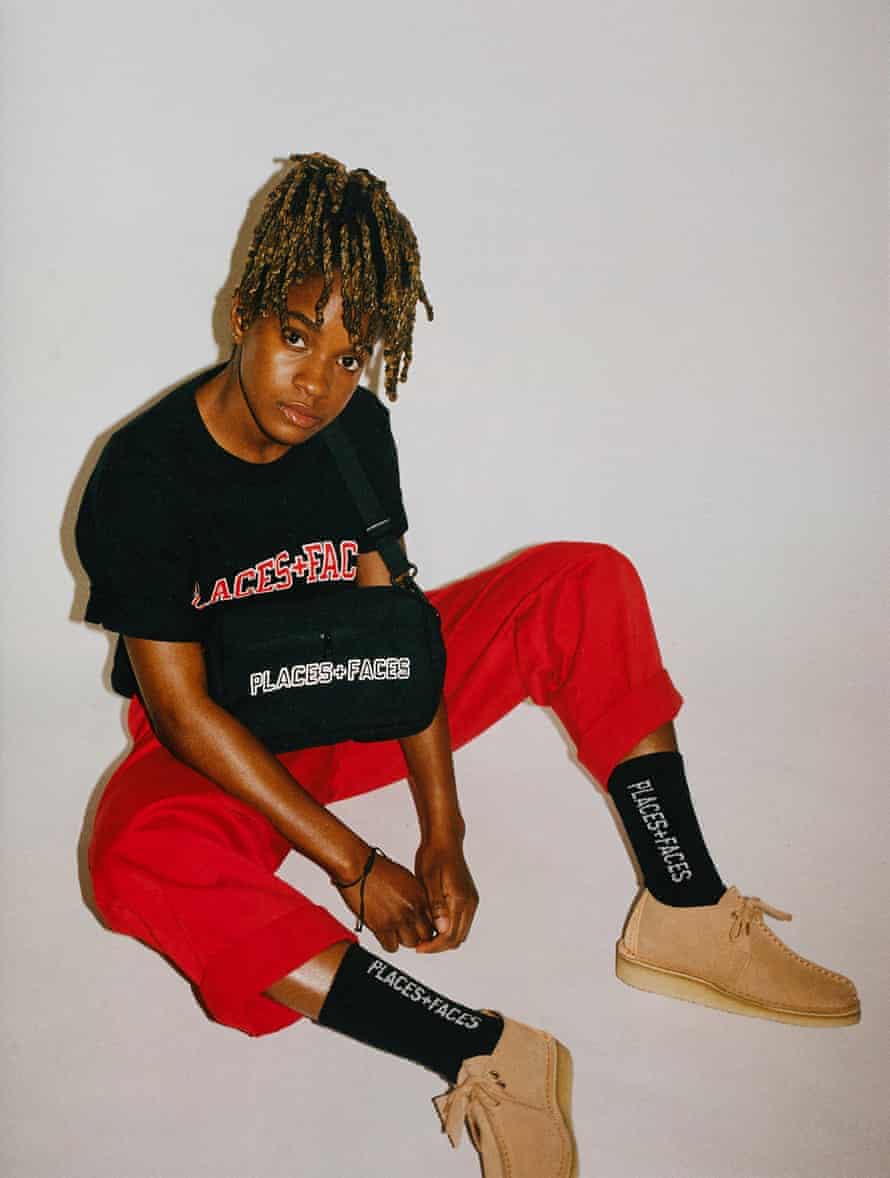The reggae producer Bunny Lee said: “Clarks stand the test of time inna Jamaica. All the other shoes come and bow down at Clarks’ foot.” DJ Trinity said in the 70s that you couldn’t get a girlfriend if you didn’t wear Clarks. And the dancehall star Vybz Kartel dedicated no fewer than three hit songs to the shoes. Clarks might be associated with schoolchildren in the UK, but they have also been the shoe of choice for Jamaican men for nearly 70 years.

Al Fingers has spent time studying the history of how this happened. A updated edition of his book Clarks in Jamaica has just been published and it’s exhaustive, with detail about different models likely to appeal to even the most clued-up enthusiast. The 2021 edition is even more of a deep dive than 2012. “[For the first edition] I wasn’t so familiar with all the styles of Clarks that people were wearing, so a lot of them I missed,” says Fingers. “I expanded it to show the lesser-known Clarks and also tell the history of certain styles.”
The phenomenon of Clarks in Jamaica is about a lot more than footwear – it tells the story of the relationship between the island and the UK over 100 years. The shoes can be traced back to the colonial era. Clarks were sold in the 20s, and seen as aspirational shoes because they came from Britain. “There were two main stores, next door to each other on King Street in Kingston. Nathans and Issas, both upmarket stores,” says Fingers. “They were the only stockists and would have amazing window displays. To a lot of Jamaicans, King Street was the main shopping street.” The shops first sold women’s and children’s shoes, before the men’s desert boot arrived in 1949. The popularity was a slow burn but by 1970, hundreds of pairs were sold in Jamaica every week and annual Clarks sales in the country were £100,000.

The impact of the Windrush generation can be seen here, too. About 200,000 people emigrated from Jamaica to the UK between 1955 and 1968. This community, and also Jamaicans in the US, would take the shoes back on visits, or send them to family and friends. One story in Fingers’ book details a coffin-maker in Miami who would import coffins into Jamaica and fill them with Clarks. After Michael Manley was elected as Jamaica’s prime minister in 1972 and banned imports of foreign footwear, this system was ramped up.
Jamaicans would make the trip to Street, the small Somerset town where Clarks has factory shops. Fingers quotes the producer Ossie Thomas, who describes the experience as “a pilgrimage”.
“You would be amazed with how many shoes have entered Jamaica from Jamaicans buying them in outlet stores in the UK – thousands,” says Fingers. “Records would come from Jamaica, you would sell the records, buy Clarks, string vests and diamond [argyle] socks, all the other things that were here. The whole Clarks thing is very caught up in the music industry, they’re all connected.”

While the sound of reggae has evolved over time, the shoes have been a consistent element of its style. A spread in Fingers’ book shows record covers by artists including Barrington Levy and Augustus Pablo, with all the artists wearing Clarks, while another spread is jam-packed with a list of songs with lyrics that feature the shoes, from 1976 to 2020.

In the 70s and 80s, wearing Clarks might have caused young men to be targeted by the Jamaican police, because the shoes were associated with the so-called rude boys. These days, they are worn by politicians. In his election campaign in 2020, Andrew Holness, the country’s prime minister, conspicuously wore Clarks, holding them in the air at public appearances. “Can you imagine Boris Johnson doing [something like] that?” says Fingers. He explains it was a direct way for Holness to reach a specific demographic. “[DJ] Ninjaman said, they aren’t a bad man shoe, they’re a garrison shoe … Garrisons are the poorer part of town, and garrison people love Clarks the most.”
from Lifestyle | The Guardian https://ift.tt/2Q5se0i
via IFTTT

comment 0 Comment
more_vert